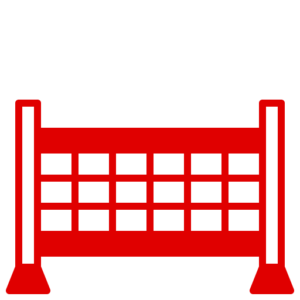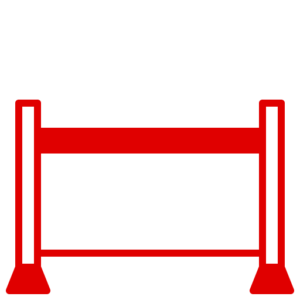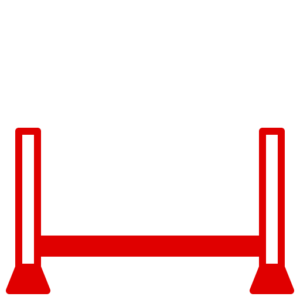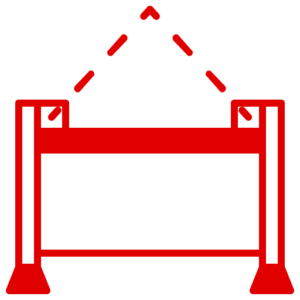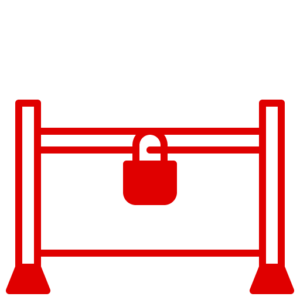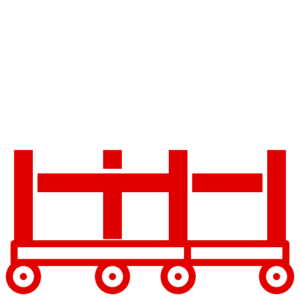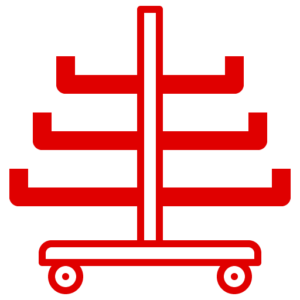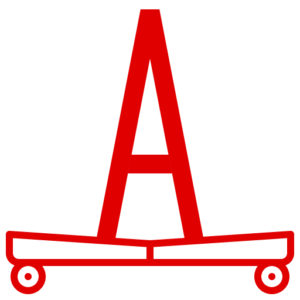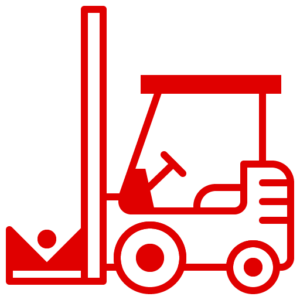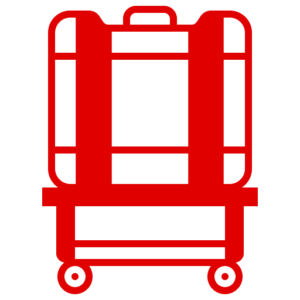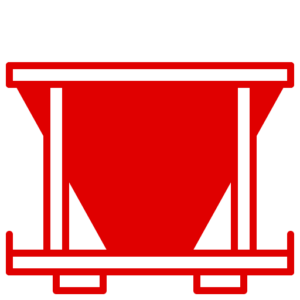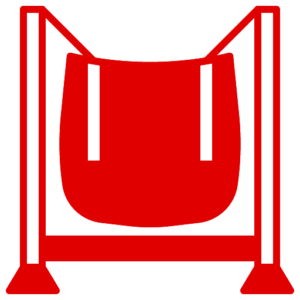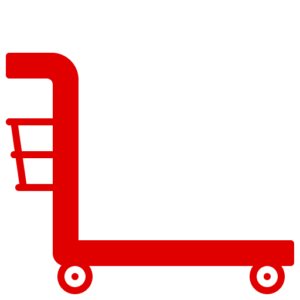News
Navigating LOLER Regulations: Ensuring Safe Use of Stillages and Cages
As a leading provider of stillages and cages, Lowe understands the importance of complying with LOLER regulations. In this blog post, we will delve into various aspects of LOLER and how they relate to the safe and compliant use of stillages and cages.
- How LOLER Regulations Apply to Stillages in Lifting Operations: LOLER regulations apply to stillages as they are classified as lifting equipment. Compliance ensures safe handling, transportation, and storage of goods or materials. Employers must adhere to LOLER requirements to maintain a secure work environment.
- Determining Load Capacity of Stillages According to LOLER: LOLER mandates that stillages be labeled or marked with their load capacity information. This ensures operators know the maximum weight a stillage can safely carry, preventing overloading and preserving structural integrity.
- Ensuring Stillages Comply with LOLER Regulations: Employers should source stillages from reputable suppliers like Lowe that adhere to recognised safety standards. Compliance is achieved by selecting stillages designed and manufactured to meet LOLER requirements.
- Conducting Thorough Examination of Stillages under LOLER: Thorough examinations are essential to comply with LOLER. Employers must ensure stillages undergo periodic inspections by competent individuals to verify their safety and working condition.
- Impact of LOLER Requirements on Stillage Design: LOLER requirements influence the design of stillages, emphasizing factors like structural integrity, stability, and compatibility with lifting equipment. Lowe’s stillages are designed with these considerations in mind to meet LOLER standards.
- Ensuring Stillage Stability during Lifting Operations as per LOLER: To ensure stillage stability, LOLER regulations stress proper stacking, secure attachment, and adequate weight distribution. Lowe’s stillages are engineered with stability features to facilitate safe lifting operations.
- LOLER’s Impact on Stacking and Storage of Stillages: LOLER regulations govern the safe stacking and storage of stillages. Employers must provide clear guidelines on stacking limitations, placement, and safe storage practices to prevent accidents and maintain compliance.
- Risk Assessment for Using Stillages in Lifting Operations under LOLER: Employers are required to conduct risk assessments specific to stillage usage. Identifying potential hazards and implementing control measures mitigates risks associated with lifting operations, ensuring a safe working environment.
- Ensuring Competency of Individuals Operating Lifting Equipment with Stillages: Employers must ensure individuals operating lifting equipment with stillages possess the necessary competence and training. Lowe offers training programs to enhance the skills and knowledge of operators, promoting safe practices.
- Training Requirements for Stillage Operators as per LOLER: LOLER regulations necessitate proper training for stillage operators. Lowe provides comprehensive training to operators, covering topics such as safe handling, assembly, disassembly, and recognizing potential defects.
- Proper Maintenance of Stillages to Comply with LOLER: LOLER mandates regular maintenance of stillages to ensure their safety and compliance. Employers should follow manufacturer recommendations, conduct inspections, and address any issues promptly to meet LOLER requirements.
- LOLER Regulations and Inspection Frequency of Stillages: LOLER stipulates regular inspections of stillages to maintain compliance. Employers must establish inspection schedules, conduct routine checks, and document findings to demonstrate adherence to LOLER regulations.
- Documenting Examinations and Inspections of Stillages as Required by LOLER: To comply with LOLER, employers must document thorough examinations and inspections of stillages. This documentation serves as proof of compliance and helps track maintenance history and corrective actions taken.
- Safe Transportation of Stillages in Line with LOLER Regulations: LOLER regulations extend to the safe transportation of stillages. Employers must secure stillages during transport to prevent shifting or dislodgment, following LOLER guidelines. Employing proper restraints and utilising appropriate lifting equipment ensures the safe transportation of stillages.
- Impact of LOLER Regulations on Attachment and Lifting Mechanisms with Stillages: LOLER regulations influence the selection and use of attachment and lifting mechanisms with stillages. Employers must ensure these mechanisms are compatible, properly maintained, and used in accordance with LOLER requirements.
- Identifying and Addressing Structural Issues or Defects in Stillages under LOLER: LOLER requires employers to identify and address any structural issues or defects in stillages. Regular inspections, thorough examinations, and prompt repairs or replacements are necessary to ensure safe usage.
- Documentation and Certification of Stillages in Compliance with LOLER: LOLER regulations require proper documentation and certification of stillages. Employers must maintain records of compliance, including manufacturer information, load capacity, inspection dates, and compliance with relevant standards.
- Proper Use of Lifting Accessories with Stillages in Accordance with LOLER: LOLER emphasises the proper use of lifting accessories with stillages. Employers must ensure that accessories are suitable, in good condition, and utilised according to LOLER guidelines to maintain safe lifting operations.
- LOLER Regulations and Maintenance/Repair of Stillages: LOLER regulations govern the maintenance and repair of stillages. Regular maintenance, adherence to manufacturer guidelines, and prompt repairs are essential to comply with LOLER and ensure the ongoing safety of stillages.
- Promoting a Culture of Safety and Compliance with Stillages and LOLER: Employers play a crucial role in fostering a culture of safety and compliance. By providing adequate training, regular inspections, open communication, and enforcing LOLER regulations, employers can create a safe working environment regarding stillage usage.
- Assessing the Suitability of Stillages for Specific Lifting Operations under LOLER: LOLER requires employers to assess the suitability of stillages for specific lifting operations. Factors such as load capacity, stability, and compatibility with lifting equipment must be considered to ensure safe and efficient operations.
- LOLER Regulations and Safe Use of Stillages in Hazardous Environments: LOLER regulations encompass the safe use of stillages in hazardous environments. Employers must identify and address specific risks associated with these environments, implementing appropriate control measures for employee safety.
- Training Employees to Recognize and Report Defects or Issues with Stillages as per LOLER: LOLER regulations necessitate training employees to recognize and report defects or issues with stillages. Employees should be aware of potential hazards, know how to identify problems, and understand the importance of timely reporting.
- Risk Assessments for Lifting Operations involving Stillages under LOLER: Employers must conduct comprehensive risk assessments for lifting operations involving stillages under LOLER. Assessing potential hazards, implementing control measures, and regular reviews promote a safe working environment.
- LOLER Regulations and Design/Construction Standards of Stillages: LOLER regulations influence the design and construction standards of stillages. Manufacturers like Lowe ensure compliance with LOLER requirements by engineering stillages with structural integrity, stability features, and compatibility with lifting equipment.
- Ensuring Safe Assembly and Disassembly of Stillages during Lifting Operations according to LOLER: Employers must ensure the safe assembly and disassembly of stillages during lifting operations, aligning with LOLER. Proper training, clear work instructions, suitable equipment, risk assessments, and effective supervision promote safety.
- Communication and Enforcement of LOLER Requirements for Stillages by Employers: Employers should communicate and enforce LOLER requirements regarding stillages effectively. Clear policies, training programs, regular audits, and disciplinary measures contribute to a culture of compliance and safety.
- LOLER Regulations and Labelling/Marking of Stillages for Identification and Compliance Purposes: LOLER regulations mandate clear labelling and marking of stillages for identification and compliance. This includes unique identifiers, load capacity information, manufacturer details, compliance markings, and inspection records.
- Ensuring Proper Communication and Coordination between Stillage Operators and Lifting Equipment Operators in Compliance with LOLER: Proper communication and coordination between stillage operators and lifting equipment operators are essential under LOLER. Clear protocols, pre-operation briefings, standardized signals, and ongoing communication promote synchronized and safe lifting operations.
- LOLER Regulations and the Use of Stillages in Different Industries and Work Environments: LOLER regulations apply to the use of stillages in diverse industries and work environments. Employers must consider sector-specific requirements, conduct industry-specific risk assessments, and ensure compliance with both LOLER and relevant industry standards

